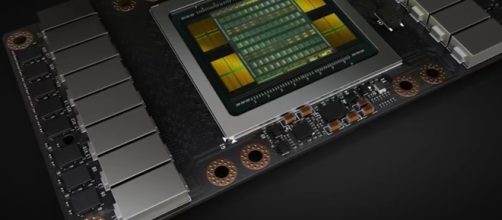Recently, Nvidia recently gave away the first Volta accelerators to AI researchers according to Seeking Alpha. Nvidia Volta is a microarchitecture that will become the successor of the current microarchitecture, Pascal. Before its arrival, there are several rumors popping up already. Nvidia Volta, which will be replacing the current generation Micro Architecture Pascal, is rumored to be launched in 2017. Though there's no confirmation on this news and its launch isn't impossible, there's a ray of the doubt for the same because when Nvidia unveiled the Tesla V100, it showed that the product wasn't something that could be bought and used yet.
Specs and features
The current generation Pascal includes Titan XP and GTX 1080-1050, however, Volta will use GV100 GPU, whose consumer graphic cards may have GV104 chips. Another rumor is that these consumer graphic cards will be called GTX 2080 and 2070. The successor to GTX 1080 would have been GTX 1180 if they followed the system wherein increment was done by 100 in the ranges. However, this system of naming is easy to understand, thus a better option.
Performance of the GPU
When it comes to analyzing the performance, several guesses and assumptions are all that one can find since it is too early to determine how the Volta will perform in comparison with the previous Pascal and Maxwell (which was succeeded by Pascal).
Then comes the dilemma about what process the GPU will use. It was planned that Volta will use 10nm of the process, however shrinking the transistors is becoming a big task. Thus, it is rumored that it will use 12nm process from TSMC, the same company that makes chips for NVIDIA.
Other rumors around Volta include the kind of memory the cards will be using. A press release was published by the memory manufacturer SK Hynix which “introduced the world’s fastest 2Znm 8Gb (Gigabit) GDDR6 (Graphics DDR6) DRAM. The product operates with an I/O data rate of 16Gbps (Gigabits per second) per pin, which is the industry’s fastest. With a forthcoming high-end graphics card of 384-bit I/Os, this DRAM processes up to 768GB (Gigabytes) of graphics data per second.” So far, this is all that is known about the development of Volta.
Perhaps, some interesting information will soon pop in and all of these rumors will become a reality bringing a revolution in the world of technology. Stay tuned for more news and updates on technology.


